Opponent in Sweden, our technology is the best
 Bashny.Net
Bashny.Net
As recently at the Swedish Museum of military equipment Arsenalen, I bought there, on occasion, an interesting book - "The Swedish armor. 90 years of Swedish military equipment »(Svenskt pansar. 90 år av svenskt stridsfordonutveckling). One chapter there interested me so much that I even gave trouble to translate it into Russian, and to present to the public. Immediately warn that many letters and pictures ...
Maneuverability possible opponent in the northern part of Norrland is a serious concern for our defense planning. Check these features on the example of the T-80U, in the area of our defensive positions, it confirmed the worst fears - the car and crossed the roads and deep snow.
15 photos
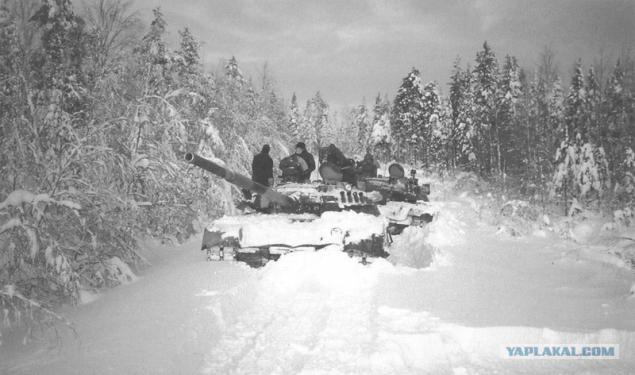
Unique offer
On the last working day before Christmas 1990, a year after the fall of the Berlin Wall, to the office of the Swedish Oboronpostavki (Försvarets materielverk, FMV) has come a fax from the Swedish Embassy in Bonn. It was a list of weapons and military equipment in East Germany, offered for sale, the amount of about a hundred pages.
In November, in Paris, the 22 countries of NATO and the former Warsaw Pact was signed Treaty on Conventional Armed Forces in Europe (CFE). The Treaty area (from the Atlantic to the Urals), the parties have established such restrictions on weapons that before the end of 1995 were to be destroyed more than 10,000 tanks, armored vehicles and artillery systems. Germany quickly put up for sale the technique of the former GDR. Sweden has not participated in the CFE Treaty, and therefore, could buy something from this arsenal.
For information about the threat
The FMV, on duty, on the last day before Christmas, was the head of the department of technical studies Lt. Col. Carl Gustav Svanteson (CG Svantesson). Fax, for the most part, listed what he theoretically studied for the past 15 years, while in training at the headquarters of the army, and the service as chief of intelligence in the headquarters of the. It was necessary to seize an opportunity to study our main threat - the Soviet Union ceased to exist all through the year.
Obviously, the main interest was the T-72 tank, but what other armored vehicles selected for the study? Army intelligence suggested that MT-LB, whose capabilities have been relatively poorly known, but interesting, as an armored personnel carrier he played a prominent role in the scenario of threats in northern Norrland. FMV has sent a request to the government that the spring of 1991 decided to purchase in order to study. Swedish application (the amount allocated by the government) was significantly less than the amount the German Ministry of Finance has set the lower limit. As a result of negotiations in Sweden managed to defend the original amount of the purchase, while the German Ministry of Defence was to cover the difference in the form of payment for the results of the Swedish test. NATO interested in cross-country vehicles for the Arctic Circle.
Unusual purchases
FMV leaders had to improvise, given the unusual purchases and certain turbulence in Germany at that time.
In autumn 1991, the Swedish delegation in Germany has purchased five T-72 and MT-LB-five. From left to right: Head of Rolf Enblom (Rolf Enblom), Major Ian Fosberg, Colonel Svanteson, Major Karl Skaremir (Karl Skaremyr, in place of the driver T-72), an engineer Anders Berg (Anders Berg), Lieutenant Colonel Yang Estlund (Jan Östlund) and Head of Gender Holmberg (Paul Holmberg). Carl Skaremir represented the army, and the rest - FMV.
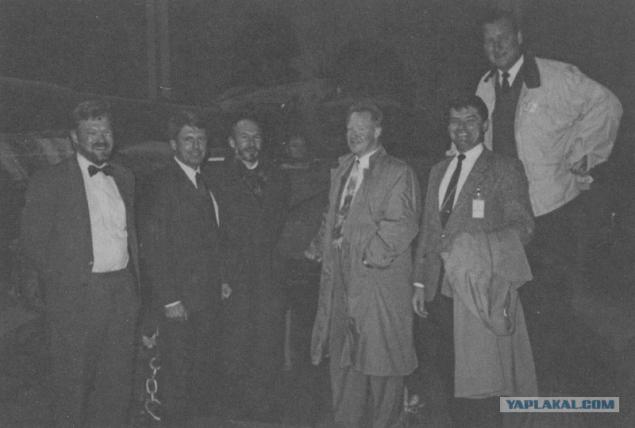
Mayor Jan Fosberg (Jan Forsberg) from the department of armored vehicles (stridsfordonsbyrån) was responsible for the delivery of samples, as well as the planning of their inspections and tests. It is perfectly versed in military technology of the Warsaw Pact, he was fluent in German and had an exceptional ability to build links and use them to achieve the objectives of the project.
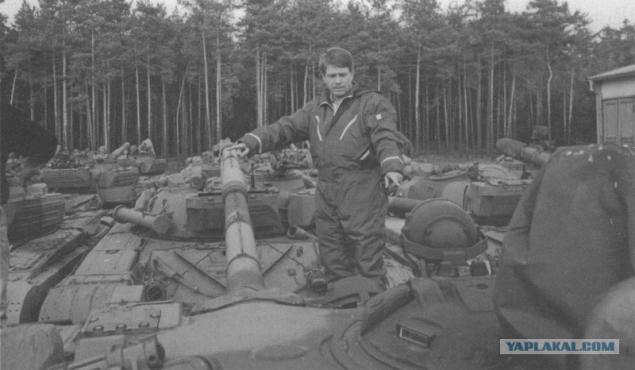
The results of tests and trials
T-72 and MT-LB in northern Norrland showed a patency, which has surpassed all expectations (or fears). The tests were a turning point for a reassessment of the threat of northern Scandinavia. Calculation on impassable terrain for armored Warsaw Pact proved to be greatly exaggerated. Also, tests have confirmed what many have long observed: Army needs the type of armored personnel carrier MT-LB, which can protect still completely unprotected infantry units.
T-72 and MT-LB without preparation overcome Wheaton River during testing for continuity in northern Norrland

...

Unexpected information about the enemy's armor
The crew of the T-72 M1 consists of three people. Cannon caliber 125 mm automatic loading is separate. The machine weighs about 44 tonnes and using 12-cylinder engine capacity of 780 liters. from. speeds up to 65 km / h. Tests for permeability showed that the ability of the tank to overcome the deep snow and Carr were underestimated.
Tank T-72 demonstrates "samovytaskivaniya" in a swamp near the defensive line Calix (Kalixlinjen). Beam cables engages the caterpillars during their rotation is delayed under the tank and serves as an additional grouser. In the stowed position the beam for self usually attached to the aft tank.

The most interesting was probably the assessment of the vulnerability of the tank. T-72M1 was modernized variant of Russian tanks, standing in service since 1973. T-72M1 was established in 1982 and had a better book. The upper frontal part was strengthened by 16 mm high-strength steel sheet. Protection of the tower was increased by a special filler. It was the casting out of something that looked like quartz sand. Her resistance was not much higher than normal steel armor. She did not give impressive growth of security, as compared with a simple increase in the thickness of reservation.
Comparison with past assumptions
In order to assess the vulnerability and the effectiveness of the T-72 (which received the code name Hotstrv IV) FMV at the time of R & D conducted, the results of which formed the basis of the estimates produced Services Institute (Försvarets forskningsanstalt, FOA) by computer simulation and test firings. Now it was very interesting to compare the actual data with the results of past evaluations.
It was found that the ballistic protection as towers, and housing, have been underestimated (equivalent thickness proved to be 550 mm instead of 480). Also found discrepancies in the deployment of elements of ESD, and much more, compared with the model, the size of the fuel pump. When the modern data again drove through a computer simulation, the differences in the probability of a final defeat (utslagningssannolikheten) amounted to only a few percent.
In addition, it was found that regular armor-piercing projectiles has a greater initial velocity than previously thought. If the calculations had been wrong to estimate the size of the corresponding powder charge.
Intelligent design
MT-LB had a good cross in the snow and mud. On the bottom - MT-LBU.

It was found that T-72 is a well-thought-out protection against nuclear, chemical and biological weapons. Most of the automation was electromechanical (relay), which makes it insensitive to radiation. High was the level of resistance to electromagnetic pulse (wiring was screened). On the inside of the armor was installed 20-50 mm thick coating protects against gamma rays. This coating also proved effective protection against secondary fragments in the defeat of HEAT projectiles of small caliber. It reduces the total number of the fragments, and the cone angle of the dispersion. Low profile tank reduced the likelihood of overturning shock. An interesting feature was the spring-loaded valve intakes, protects the filter from being damaged by explosion.
Also measurements were made infrared tank. On the front angle, it was low, but the exhaust pipe on the left side gave a clear infrared signal. The tank can be installed smoke screen by injecting fuel into the exhaust pipe of the engine, or by a smoke grenade. This gave a good veil masking in the visible spectrum, but has a very limited impact on the infrared heated parts.
On one of the machines that arrived in Sweden in the front broneliste was installed container containing an electromagnet, creating a false magnetic silhouette of a tank in front of his body, which could lead to premature undermining minutes, reacting to a magnetic field.
The results of evaluation of ergonomics did not bring surprises. The small size of the body left the crew very limited space (especially the driver-mechanic). Monitoring devices in the near field commander had a very limited side-view shooter place was crowded, but quite acceptable. Furthermore, in the tank was very high level of noise and vibration. With a simple modification you can get a seat on the driver's comfort is not inferior Ikv 91.
We concluded that the car was better than its reputation in the West, but, like all Russian tanks, it was created to attack and not to war with defensive positions.
MT-LB becomes Pansarbandvagn 401
In autumn 1992, the Government decided to purchase 800 MT-LB in Germany. Department of armored vehicles was overloaded with work on mounting a series of combat vehicles Strf 90, for the purchase of a new tank, repair and modernization of armored personnel carriers Pbv 302. Therefore, a small group was organized under the leadership of Major Fosberga, which completed the project for procurement, the largest if you count in units art. Already the purchase of cars with all the accessories required considerable effort, because the state and the machines themselves, and ZIPov to them, it was very foggy. In view of this, the group was required to take an inventory, which was also not easy, as the system supply of the army in East Germany had a completely different structure than in Sweden. In addition, the car had to be repaired and upgraded the specifications of 401 armored personnel carriers Pbv to meet Swedish requirements for safety and maintenance. Repair and modernization of the firm produced SIVG (which in 1994 changed its name to Neubrandenburger Fahrzeugwerk).
Research and testing techniques have shown that it is very robust and provides a high for its weight, the level of protection. In the picture - life version of a tracked conveyor.

More art from east
As the number of MT-LB was not sufficient to satisfy the requirements of the army in the light armored personnel transporters, the management of land forces suggested the possibility of use for these purposes of the BMP-1. FMV has been set up quite skeptical due to a number of uncertainties. Cannon require upgrading for security reasons. Due to the age and design of the ammunition also required improvements or upgrades. The command, however, insisted on the need for carriers and was ready to give up functioning guns.
In view of this FMV was ordered to order the BMP-1 for evaluation and testing. It was purchased five cars. These tests were carried out simultaneously in different parts of the country. And in June 1994, the Government makes a decision on full-scale procurement. State of the art was very different. Bonn ordered the stores, whose leaders were former colonels of the Army of the GDR, to put all the property that could be used for civilian purposes, in covered warehouses. To fulfill this order military equipment very often had to stand in the open air, because of what many of the cars were flooded with water and subjected to severe corrosion.
On the modernization requirements announced by the Swedish competition. The best turned out to be an offer of Czech company VOP 026 of Sternberg. She is at pains to show that meets Western standards. The company was certified by ISO English Lloyd, and meet the other requirements set by FMV. Although the choice of the car from the start looked doubtful, due to the good work of the FMV in support of the contract, the result of modernization was better than you could imagine.
BMP-1 have been renovated and developed by the Czech company VOP 26. Many of the vehicles were in poor condition, but have been upgrading to high-end 501 Pbv that proudly displayed at the exhibition. Swedish FMV representative Carlson Gert (Gert Karlsson) surrounded by a translator of Vladimir Kvapilovoy (Vladimira Kvapilova) and head of the department of development Jiri Tayhmana (Jiri Teichman).
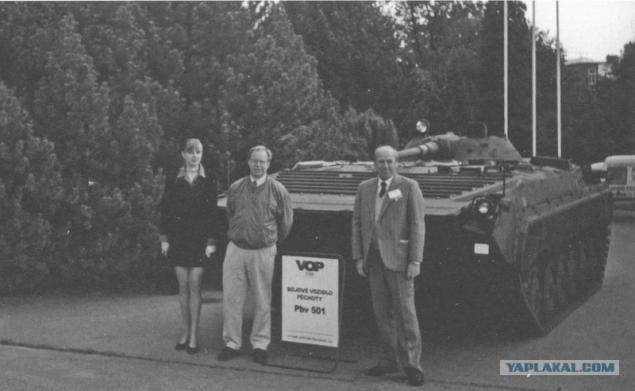
Government on the purchase of BMP-1 also included the purchase of 32 armored vehicle launched bridges BLG 60. In this case, FMV has criticized this decision. The bridge layer was created on the basis of the T-55, and demanded quite unique for Sweden system maintenance and supply of spare parts.
The bearing capacity of bridges and their condition was not documented. Stress tests carried out at the Royal Institute of Technology (Kungliga Tekniska Högskolan) in Stockholm showed that the bridge can withstand 85 tons. This leaves very little margin of safety for the tank Strv 122, which weighs more than 60 tons. Generally, the bridges are requirements to double strength margin relative weight of the techniques for which they are intended. During the fatigue tests the bridge collapsed after 996 passages machines weighing 65 tons. Thus, none of the tests was not satisfactory. If a decision on the purchase of BLG 60, their use had to be limited to strict safety requirements. The positive in this context was that the unfolding of the bridge was a very quick and simple, and the cost of making the machine into service - an unprecedented low. In fact, Sweden has paid only for the update, the company spent Neubrandenburger Fahrzeugwerk. Bridgelayer received Swedish designation Brobv 971.
Total Pbv to 501 350 cars were upgraded. However, they have served in the Swedish army for only two years, as a training tool. In 2000, there was an order to lift them out of service.
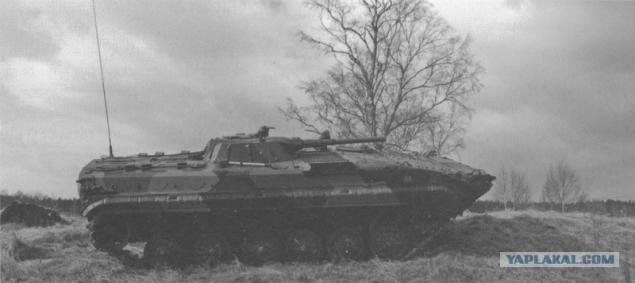
The above stories are presented in the light of the changing role of commanders of the armed forces, and FMV in 1993-1994. Earlier, FMV, to obey the government, was responsible for the purchase and maintenance of military equipment, and the management of the armed forces be consulted. In the given case as completely changed: the Army turned to the government for the purchase, which transferred it in the form of orders for execution, FMV. Before FMV leaders were informed that the responsibility in this case and will go to the customer (in this case - the ground forces).
T-80 - a candidate for the Swedish tanks
During the ongoing work with the candidates for the new Swedish tank, the spring of 1992, the political leadership was proposed to consider the role and the Russian T-80 tank. Department of armored vehicles produced FMV issue, and established contact with the Russian seller - Obroneksportom.
While in Russia it was difficult times, and it was difficult to get in touch and get information from both the Russian official structures, as well as from companies. Embassy of Sweden in Moscow managed by the Russian authorities to coordinate the visit of the Swedish delegation. However, the agenda remained shrouded in obscurity until the departure to Moscow.
First the Swedish delegation at the talks on the purchase in Russia
The delegation expected Sheremetyevo airport VIP-reception and an escort with flashing lights to the center of Moscow, where the meeting was held within the framework of the Council for Military-Technical Cooperation with Foreign Countries. The Council of Representatives of Oboronprom and several other organizations.
During shooting on the tank at the Kubinka proving ground were demonstrated to all types of ammunition, including guided missile that runs through the barrel.
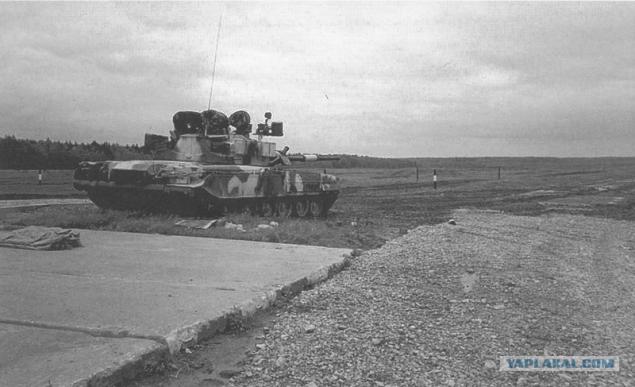
The next day, the delegation visited the Kubinka, located 60 kilometers west of Moscow, where they were met by the commander of a tank division, General Zhuralov (Zuralov). At the landfill was demonstrated Kubinka Tank T-80U - variant with a gas turbine engine are produced in Omsk.
Russian hosts were completely open: the delegation allowed to photograph all parts of the tank, do not hide, and during the presentation, and answers to questions. Completed demonstration firing a guided missile at a distance of 4 kilometers. The goal has been successfully struck.
The Swedes were surprised by the openness of Russian, which allowed to study and photograph all the details of the T-80U. In the photo - the gunner's sight. Bottom left screen AHAVA night sight.
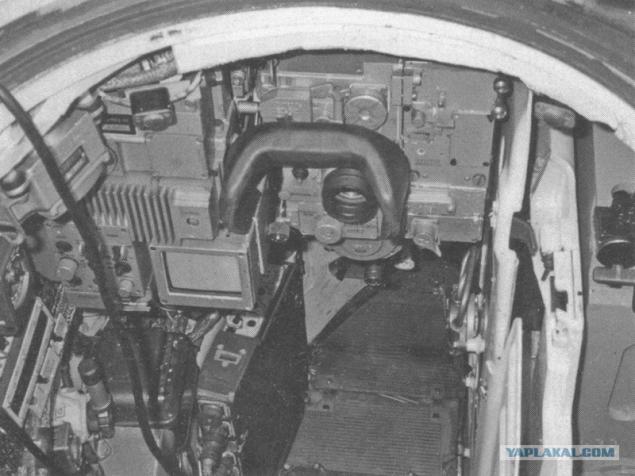
It was also allowed to study in detail the ammunition. From left to right: throwing device and run out of the barrel antitank guided missile 9M119, the cumulative charge and the projectile, armor-piercing projectiles and associated charges.
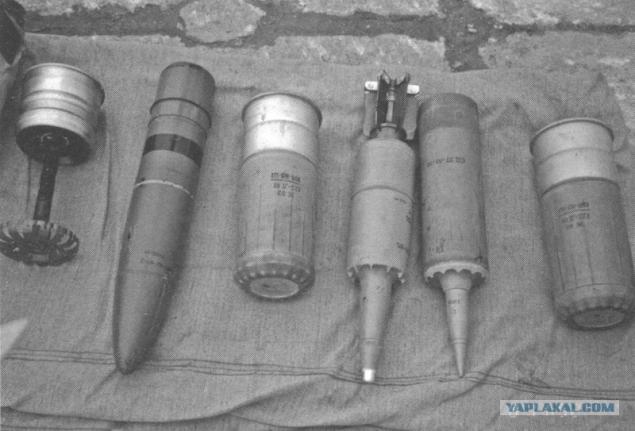
A trip to Siberia
The big surprise for the delegation was the proposal the next day to fly to Omsk, to the south of Western Siberia.
Source:
Maneuverability possible opponent in the northern part of Norrland is a serious concern for our defense planning. Check these features on the example of the T-80U, in the area of our defensive positions, it confirmed the worst fears - the car and crossed the roads and deep snow.
15 photos

Unique offer
On the last working day before Christmas 1990, a year after the fall of the Berlin Wall, to the office of the Swedish Oboronpostavki (Försvarets materielverk, FMV) has come a fax from the Swedish Embassy in Bonn. It was a list of weapons and military equipment in East Germany, offered for sale, the amount of about a hundred pages.
In November, in Paris, the 22 countries of NATO and the former Warsaw Pact was signed Treaty on Conventional Armed Forces in Europe (CFE). The Treaty area (from the Atlantic to the Urals), the parties have established such restrictions on weapons that before the end of 1995 were to be destroyed more than 10,000 tanks, armored vehicles and artillery systems. Germany quickly put up for sale the technique of the former GDR. Sweden has not participated in the CFE Treaty, and therefore, could buy something from this arsenal.
For information about the threat
The FMV, on duty, on the last day before Christmas, was the head of the department of technical studies Lt. Col. Carl Gustav Svanteson (CG Svantesson). Fax, for the most part, listed what he theoretically studied for the past 15 years, while in training at the headquarters of the army, and the service as chief of intelligence in the headquarters of the. It was necessary to seize an opportunity to study our main threat - the Soviet Union ceased to exist all through the year.
Obviously, the main interest was the T-72 tank, but what other armored vehicles selected for the study? Army intelligence suggested that MT-LB, whose capabilities have been relatively poorly known, but interesting, as an armored personnel carrier he played a prominent role in the scenario of threats in northern Norrland. FMV has sent a request to the government that the spring of 1991 decided to purchase in order to study. Swedish application (the amount allocated by the government) was significantly less than the amount the German Ministry of Finance has set the lower limit. As a result of negotiations in Sweden managed to defend the original amount of the purchase, while the German Ministry of Defence was to cover the difference in the form of payment for the results of the Swedish test. NATO interested in cross-country vehicles for the Arctic Circle.
Unusual purchases
FMV leaders had to improvise, given the unusual purchases and certain turbulence in Germany at that time.
In autumn 1991, the Swedish delegation in Germany has purchased five T-72 and MT-LB-five. From left to right: Head of Rolf Enblom (Rolf Enblom), Major Ian Fosberg, Colonel Svanteson, Major Karl Skaremir (Karl Skaremyr, in place of the driver T-72), an engineer Anders Berg (Anders Berg), Lieutenant Colonel Yang Estlund (Jan Östlund) and Head of Gender Holmberg (Paul Holmberg). Carl Skaremir represented the army, and the rest - FMV.

Mayor Jan Fosberg (Jan Forsberg) from the department of armored vehicles (stridsfordonsbyrån) was responsible for the delivery of samples, as well as the planning of their inspections and tests. It is perfectly versed in military technology of the Warsaw Pact, he was fluent in German and had an exceptional ability to build links and use them to achieve the objectives of the project.

The results of tests and trials
T-72 and MT-LB in northern Norrland showed a patency, which has surpassed all expectations (or fears). The tests were a turning point for a reassessment of the threat of northern Scandinavia. Calculation on impassable terrain for armored Warsaw Pact proved to be greatly exaggerated. Also, tests have confirmed what many have long observed: Army needs the type of armored personnel carrier MT-LB, which can protect still completely unprotected infantry units.
T-72 and MT-LB without preparation overcome Wheaton River during testing for continuity in northern Norrland

...

Unexpected information about the enemy's armor
The crew of the T-72 M1 consists of three people. Cannon caliber 125 mm automatic loading is separate. The machine weighs about 44 tonnes and using 12-cylinder engine capacity of 780 liters. from. speeds up to 65 km / h. Tests for permeability showed that the ability of the tank to overcome the deep snow and Carr were underestimated.
Tank T-72 demonstrates "samovytaskivaniya" in a swamp near the defensive line Calix (Kalixlinjen). Beam cables engages the caterpillars during their rotation is delayed under the tank and serves as an additional grouser. In the stowed position the beam for self usually attached to the aft tank.

The most interesting was probably the assessment of the vulnerability of the tank. T-72M1 was modernized variant of Russian tanks, standing in service since 1973. T-72M1 was established in 1982 and had a better book. The upper frontal part was strengthened by 16 mm high-strength steel sheet. Protection of the tower was increased by a special filler. It was the casting out of something that looked like quartz sand. Her resistance was not much higher than normal steel armor. She did not give impressive growth of security, as compared with a simple increase in the thickness of reservation.
Comparison with past assumptions
In order to assess the vulnerability and the effectiveness of the T-72 (which received the code name Hotstrv IV) FMV at the time of R & D conducted, the results of which formed the basis of the estimates produced Services Institute (Försvarets forskningsanstalt, FOA) by computer simulation and test firings. Now it was very interesting to compare the actual data with the results of past evaluations.
It was found that the ballistic protection as towers, and housing, have been underestimated (equivalent thickness proved to be 550 mm instead of 480). Also found discrepancies in the deployment of elements of ESD, and much more, compared with the model, the size of the fuel pump. When the modern data again drove through a computer simulation, the differences in the probability of a final defeat (utslagningssannolikheten) amounted to only a few percent.
In addition, it was found that regular armor-piercing projectiles has a greater initial velocity than previously thought. If the calculations had been wrong to estimate the size of the corresponding powder charge.
Intelligent design
MT-LB had a good cross in the snow and mud. On the bottom - MT-LBU.

It was found that T-72 is a well-thought-out protection against nuclear, chemical and biological weapons. Most of the automation was electromechanical (relay), which makes it insensitive to radiation. High was the level of resistance to electromagnetic pulse (wiring was screened). On the inside of the armor was installed 20-50 mm thick coating protects against gamma rays. This coating also proved effective protection against secondary fragments in the defeat of HEAT projectiles of small caliber. It reduces the total number of the fragments, and the cone angle of the dispersion. Low profile tank reduced the likelihood of overturning shock. An interesting feature was the spring-loaded valve intakes, protects the filter from being damaged by explosion.
Also measurements were made infrared tank. On the front angle, it was low, but the exhaust pipe on the left side gave a clear infrared signal. The tank can be installed smoke screen by injecting fuel into the exhaust pipe of the engine, or by a smoke grenade. This gave a good veil masking in the visible spectrum, but has a very limited impact on the infrared heated parts.
On one of the machines that arrived in Sweden in the front broneliste was installed container containing an electromagnet, creating a false magnetic silhouette of a tank in front of his body, which could lead to premature undermining minutes, reacting to a magnetic field.
The results of evaluation of ergonomics did not bring surprises. The small size of the body left the crew very limited space (especially the driver-mechanic). Monitoring devices in the near field commander had a very limited side-view shooter place was crowded, but quite acceptable. Furthermore, in the tank was very high level of noise and vibration. With a simple modification you can get a seat on the driver's comfort is not inferior Ikv 91.
We concluded that the car was better than its reputation in the West, but, like all Russian tanks, it was created to attack and not to war with defensive positions.
MT-LB becomes Pansarbandvagn 401
In autumn 1992, the Government decided to purchase 800 MT-LB in Germany. Department of armored vehicles was overloaded with work on mounting a series of combat vehicles Strf 90, for the purchase of a new tank, repair and modernization of armored personnel carriers Pbv 302. Therefore, a small group was organized under the leadership of Major Fosberga, which completed the project for procurement, the largest if you count in units art. Already the purchase of cars with all the accessories required considerable effort, because the state and the machines themselves, and ZIPov to them, it was very foggy. In view of this, the group was required to take an inventory, which was also not easy, as the system supply of the army in East Germany had a completely different structure than in Sweden. In addition, the car had to be repaired and upgraded the specifications of 401 armored personnel carriers Pbv to meet Swedish requirements for safety and maintenance. Repair and modernization of the firm produced SIVG (which in 1994 changed its name to Neubrandenburger Fahrzeugwerk).
Research and testing techniques have shown that it is very robust and provides a high for its weight, the level of protection. In the picture - life version of a tracked conveyor.

More art from east
As the number of MT-LB was not sufficient to satisfy the requirements of the army in the light armored personnel transporters, the management of land forces suggested the possibility of use for these purposes of the BMP-1. FMV has been set up quite skeptical due to a number of uncertainties. Cannon require upgrading for security reasons. Due to the age and design of the ammunition also required improvements or upgrades. The command, however, insisted on the need for carriers and was ready to give up functioning guns.
In view of this FMV was ordered to order the BMP-1 for evaluation and testing. It was purchased five cars. These tests were carried out simultaneously in different parts of the country. And in June 1994, the Government makes a decision on full-scale procurement. State of the art was very different. Bonn ordered the stores, whose leaders were former colonels of the Army of the GDR, to put all the property that could be used for civilian purposes, in covered warehouses. To fulfill this order military equipment very often had to stand in the open air, because of what many of the cars were flooded with water and subjected to severe corrosion.
On the modernization requirements announced by the Swedish competition. The best turned out to be an offer of Czech company VOP 026 of Sternberg. She is at pains to show that meets Western standards. The company was certified by ISO English Lloyd, and meet the other requirements set by FMV. Although the choice of the car from the start looked doubtful, due to the good work of the FMV in support of the contract, the result of modernization was better than you could imagine.
BMP-1 have been renovated and developed by the Czech company VOP 26. Many of the vehicles were in poor condition, but have been upgrading to high-end 501 Pbv that proudly displayed at the exhibition. Swedish FMV representative Carlson Gert (Gert Karlsson) surrounded by a translator of Vladimir Kvapilovoy (Vladimira Kvapilova) and head of the department of development Jiri Tayhmana (Jiri Teichman).

Government on the purchase of BMP-1 also included the purchase of 32 armored vehicle launched bridges BLG 60. In this case, FMV has criticized this decision. The bridge layer was created on the basis of the T-55, and demanded quite unique for Sweden system maintenance and supply of spare parts.
The bearing capacity of bridges and their condition was not documented. Stress tests carried out at the Royal Institute of Technology (Kungliga Tekniska Högskolan) in Stockholm showed that the bridge can withstand 85 tons. This leaves very little margin of safety for the tank Strv 122, which weighs more than 60 tons. Generally, the bridges are requirements to double strength margin relative weight of the techniques for which they are intended. During the fatigue tests the bridge collapsed after 996 passages machines weighing 65 tons. Thus, none of the tests was not satisfactory. If a decision on the purchase of BLG 60, their use had to be limited to strict safety requirements. The positive in this context was that the unfolding of the bridge was a very quick and simple, and the cost of making the machine into service - an unprecedented low. In fact, Sweden has paid only for the update, the company spent Neubrandenburger Fahrzeugwerk. Bridgelayer received Swedish designation Brobv 971.
Total Pbv to 501 350 cars were upgraded. However, they have served in the Swedish army for only two years, as a training tool. In 2000, there was an order to lift them out of service.

The above stories are presented in the light of the changing role of commanders of the armed forces, and FMV in 1993-1994. Earlier, FMV, to obey the government, was responsible for the purchase and maintenance of military equipment, and the management of the armed forces be consulted. In the given case as completely changed: the Army turned to the government for the purchase, which transferred it in the form of orders for execution, FMV. Before FMV leaders were informed that the responsibility in this case and will go to the customer (in this case - the ground forces).
T-80 - a candidate for the Swedish tanks
During the ongoing work with the candidates for the new Swedish tank, the spring of 1992, the political leadership was proposed to consider the role and the Russian T-80 tank. Department of armored vehicles produced FMV issue, and established contact with the Russian seller - Obroneksportom.
While in Russia it was difficult times, and it was difficult to get in touch and get information from both the Russian official structures, as well as from companies. Embassy of Sweden in Moscow managed by the Russian authorities to coordinate the visit of the Swedish delegation. However, the agenda remained shrouded in obscurity until the departure to Moscow.
First the Swedish delegation at the talks on the purchase in Russia
The delegation expected Sheremetyevo airport VIP-reception and an escort with flashing lights to the center of Moscow, where the meeting was held within the framework of the Council for Military-Technical Cooperation with Foreign Countries. The Council of Representatives of Oboronprom and several other organizations.
During shooting on the tank at the Kubinka proving ground were demonstrated to all types of ammunition, including guided missile that runs through the barrel.

The next day, the delegation visited the Kubinka, located 60 kilometers west of Moscow, where they were met by the commander of a tank division, General Zhuralov (Zuralov). At the landfill was demonstrated Kubinka Tank T-80U - variant with a gas turbine engine are produced in Omsk.
Russian hosts were completely open: the delegation allowed to photograph all parts of the tank, do not hide, and during the presentation, and answers to questions. Completed demonstration firing a guided missile at a distance of 4 kilometers. The goal has been successfully struck.
The Swedes were surprised by the openness of Russian, which allowed to study and photograph all the details of the T-80U. In the photo - the gunner's sight. Bottom left screen AHAVA night sight.

It was also allowed to study in detail the ammunition. From left to right: throwing device and run out of the barrel antitank guided missile 9M119, the cumulative charge and the projectile, armor-piercing projectiles and associated charges.

A trip to Siberia
The big surprise for the delegation was the proposal the next day to fly to Omsk, to the south of Western Siberia.
Source:
Tags
See also
Happy Birthday, Brad Pitt! Top 7 blockbusters featuring one of the best actors in the world.
First. You deserve the best treatment.
The fact that it was impossible to miss! Top 10 stations "so simple!" For the year 2014.
Guinness: Share the best (by sex)
What a rocket engine is the best?
The best beaches on the planet
The best football team
The best job! New vacancy text 4 photos
What are the best engines - German, Japanese, or maybe the US?
Where do the best rocket engines in the world
















